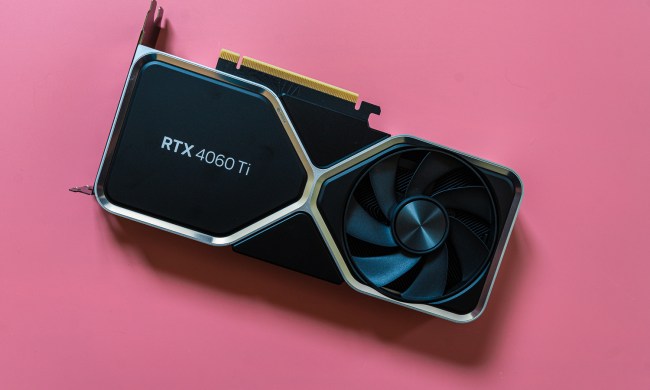
The Nvidia RTX 3080 Ti went for sale this morning and — no surprise — it sold out immediately. On one hand, it’s just another sign of the times. It’s one more powerful graphics card that gamers will largely not have access to.
But as the first high-end graphics card to launch since the GPU shortage started, there’s something even more troubling about the RTX 3080 Ti: The price.
Before it was announced, the card was rumored to cost $1,000. That would put it at $300 more than the RTX 3080 and would match AMD’s top-end card, the Radeon RX 6800 XT. Instead, it launched at an eye-watering $1,200.
That’s significantly cheaper than the $1,500 RTX 3090, yes. However, for a performance improvement of just 5% to 15% over the RTX 3080 and a price increase of almost double — a 72% premium to be exact — the $699 non-Ti variant, the math doesn’t add up. Nvidia cranked up the price without sufficiently cranking up performance. What’s the deal?
What’s an extra $200?

The RTX’s exorbitant pricing here could be chalked up to one of three things. First, in the midst of the global semiconductor shortage that’s wreaking havoc on GPU makers, including rival AMD, pricing the card too low could create a situation where demand overwhelms the company’s production capabilities. That would be the most generous analysis of the pricing situation, giving Nvidia the benefit of the doubt.
The second explanation is that with the recent launches of the RTX 3080 and AMD’s latest Radeon RX 6000 series cards, gamers have been spoiled by how much more affordable these 4K-capable GPUs have become, especially when compared against more expensive cards from the previous generations that did less. Still, the RTX 3080 Ti, which is designed as a true heir to the prior gen’s RTX 2080 Ti, is priced exactly the same as its predecessor. In fact, when the cost of inflation is factored in, the $1,199 RTX 2080 Ti from its 2018 launch would cost $1,261 today, making the RTX 3090 some $60 less expensive! Nvidia really has little incentive to go any cheaper given historic pricing.
The final possible explanation is the least favorable for Nvidia. Gamers and creators working from home during the global pandemic have been clamoring for Nvidia’s GeForce solutions, and the company may have wanted to capitalize on the demand to warrant a significant price premium. When the company unveiled its GeForce RTX 3000 series lineup initially, retailers for the GPUs claimed that demand for the card at launch outpaced historic GPU searches during the Black Friday shopping holiday.
“On the day of our RTX 3000 launch, [we’ve seen] 10 times the traffic of previous launches, and retailers around the world just experienced really unprecedented demand, with many of them telling us that they were seeing traffic that exceeded Black Friday,” Nvidia’s Justin Walker told us in a prior conference call ahead of the launch of the GeForce RTX 3060 Ti launch.
No one’s going to bat an eye paying an extra $200 for the hottest new graphics card, especially when older cards have been selling for double the retail price in secondary markets. In other words, Nvidia knew it could charge more and effectively sell out of its stock. Nvidia’s bottom line doesn’t distinguish between scalpers and actual gamers.
There’s no easy solution to fix the global chip shortage, and fighting off scalpers is an equally daunting challenge. It’s hard to blame Nvidia for pricing up its products simply because it can, but Nvidia’s case for caring about gamers has never been weaker.



